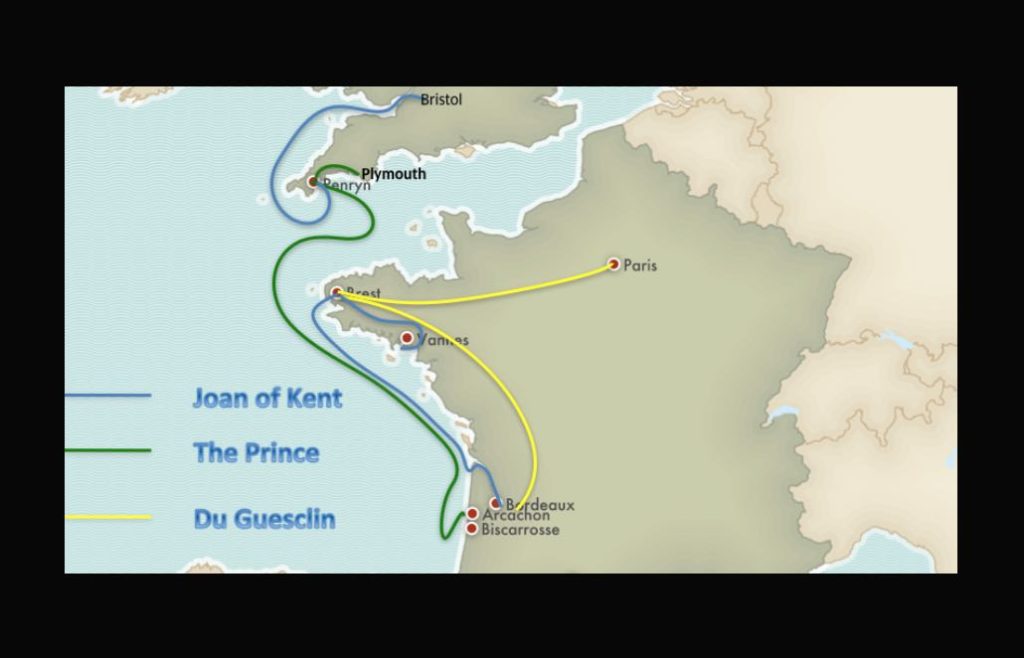Naval activity in the fourteenth century was split into two zones; firstly the north sea, with the main ports in the Thames Estuary and secondly the Channel (La Manche) with the main ports down the south coast. The choice of port along the south coast was determined by a balance between the ease of access to the Atlantic and therefore Aquitaine, on the one hand and the distance from London on the other hand. Portsmouth, Southampton, Poole, Weymouth,Brixham,Plymouth and Penryn were all used.
The importance of these ports may explain the fact that two oF Edward III’s main private residences were at a discrete distance from the south coast, at King’s Court, Gillingham in Dorset and at Clarendon Palace near Salisbury.
The Atlantic ports were the lifeblood of the english economy. The long running trade between the various parts of the Plantagenet empire had made fortunes for a large number of people, a fact which was not lost on the king who determined through a system of licensing traders, to obtain a large share for himself.
It seems incredible, but the French were confined to the Channel and the Mediterranean. Apart from a small area at the mouth of the Loire all the Atlantic ports were English, Castilian or Portugese. The wars which erupted were as much about control of the shipping routes as they were about ownership of land.
